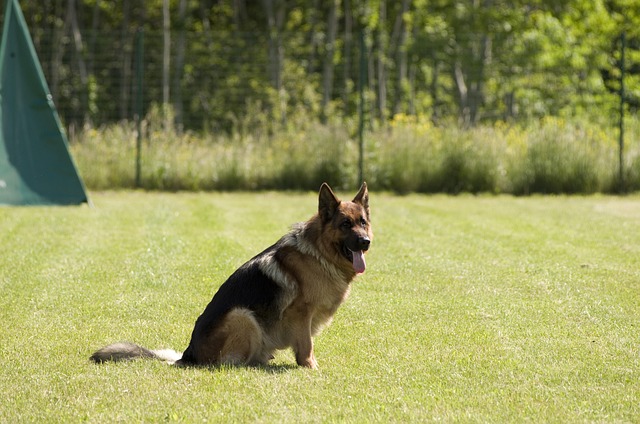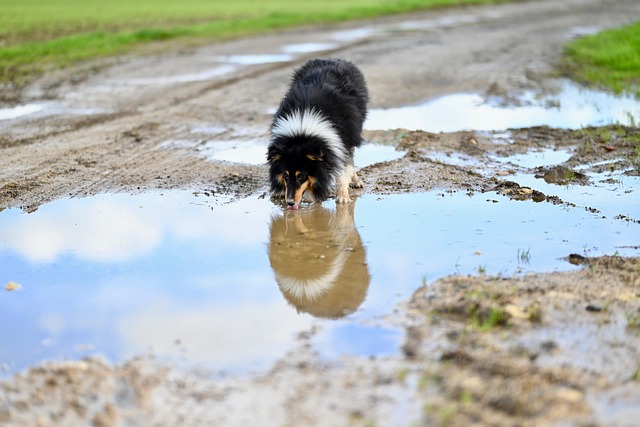As a pet sitter, go beyond basic feeding responsibilities by embracing proactive preparedness. Assess risks, create detailed pet profiles, maintain emergency contact lists, and regularly update your knowledge. Prepare an adaptable emergency response plan, identifying hazards, establishing evacuation routes, assembling supplies, and communicating clearly with owners. Stay informed about local veterinary resources to ensure prompt, competent care during crises. Regularly review and update your strategy to provide exceptional, responsible pet sitting services.
As a pet sitter, your role is vital in ensuring our furry friends’ safety and well-being when their owners are away. In this comprehensive guide, we explore the importance of preparedness in pet sitting. From understanding your responsibilities to developing a robust emergency response plan, these steps will empower you to handle unexpected situations effectively. Learn how to assess risks, create essential contact lists, and establish clear action plans for various emergencies, ensuring peace of mind for both pets and their owners.
- Understanding Your Role as a Pet Sitter and the Importance of Preparedness
- Assessing Risks and Creating a Comprehensive Emergency Contact List
- Developing a Step-by-Step Action Plan for Different Types of Emergencies
- Regularly Reviewing and Updating Your Plan to Ensure Effectiveness
Understanding Your Role as a Pet Sitter and the Importance of Preparedness
As a pet sitter, your role goes beyond simply providing food and water while the owners are away. It involves taking on the responsibility of caring for another’s beloved companions, which demands empathy, knowledge, and preparedness. Understanding this role is crucial, as it equips you with the tools to handle unexpected situations effectively. Preparedness is key in pet sitting; being ready for emergencies not only ensures the safety and well-being of the pets but also instills confidence in the owners who trust you with their furry (or feathered) family members.
When preparing for potential emergencies, consider various scenarios, from medical crises to sudden evictions. Having a solid plan involves creating emergency contact lists, learning basic first aid, and keeping essential supplies readily available. Regular training and staying updated on pet care best practices are also integral parts of being a responsible pet sitter, ensuring you’re equipped to handle unforeseen challenges with confidence and expertise.
Assessing Risks and Creating a Comprehensive Emergency Contact List
When preparing for any pet sitting assignment, assessing risks is a crucial first step. Before accepting a client, take time to understand their home dynamics and potential hazards. Do they have elderly pets with special needs? Are there young children in the household that might accidentally interact with your charge? Knowing these factors will help you tailor your emergency response plan accordingly. Create a detailed profile of each pet, noting any pre-existing medical conditions and medications.
A comprehensive emergency contact list is an integral part of this process. This should include local vets, emergency animal clinics, poison control hotlines, and out-of-town contacts in case of severe emergencies where immediate assistance is required. Keep this list updated at all times, ensuring it’s easily accessible during your shifts. Regularly review and update the information, especially if there are changes to the client’s routine or pet care requirements. Effective risk assessment and a well-compiled contact list are vital steps in being prepared for any unforeseen circumstances while pet sitting.
Developing a Step-by-Step Action Plan for Different Types of Emergencies
Developing a comprehensive emergency response plan is crucial for any pet sitter to ensure the safety and well-being of their furry charges. A step-by-step action plan should be tailored to various scenarios, considering both common and rare emergencies. For instance, a simple step-by-step guide could look like this:
1. Identify Potential Hazards: Start by assessing potential risks in the home environment, such as toxic plants, medications, or dangerous items that pets might access unsupervised. Create a list of these hazards and implement preventive measures.
2. Create an Evacuation Plan: In case of a fire, flood, or other sudden events, outline a clear evacuation route for both yourself and the pets. Ensure all exits are accessible and practice this plan regularly to ensure smooth execution during an actual emergency.
3. Prepare an Emergency Kit: Assemble a kit with essential items like first-aid supplies, pet medications, food, water, leashes, and any specialized equipment needed for specific animals. Keep this kit easily accessible and update it periodically to include any changes in the pets’ needs or your contact details.
4. Notify Owners Immediately: Establish clear communication protocols. In an emergency, promptly contact the pet’s owner(s) to inform them of the situation and provide updates on the steps taken. Keep owners in the loop throughout the response process.
5. Seek Veterinary Assistance: Familiarize yourself with local veterinary clinics and their after-hours services. Know who to contact in case of an urgent medical issue, ensuring quick access to care for the affected pets.
Regularly Reviewing and Updating Your Plan to Ensure Effectiveness
An effective emergency response plan for pet sitting isn’t set in stone; it needs regular reviewing and updating to adapt to changing circumstances. As a pet sitter, staying current with potential risks and new best practices is crucial. This includes reevaluating your initial risk assessment, considering recent local incidents involving pets, and incorporating any updates from animal care organizations or regulatory bodies.
By periodically revising your plan, you ensure it remains tailored to the needs of the pets in your care and aligned with the latest recommendations for pet safety. This proactive approach demonstrates your commitment to providing high-quality, responsible pet sitting services.






